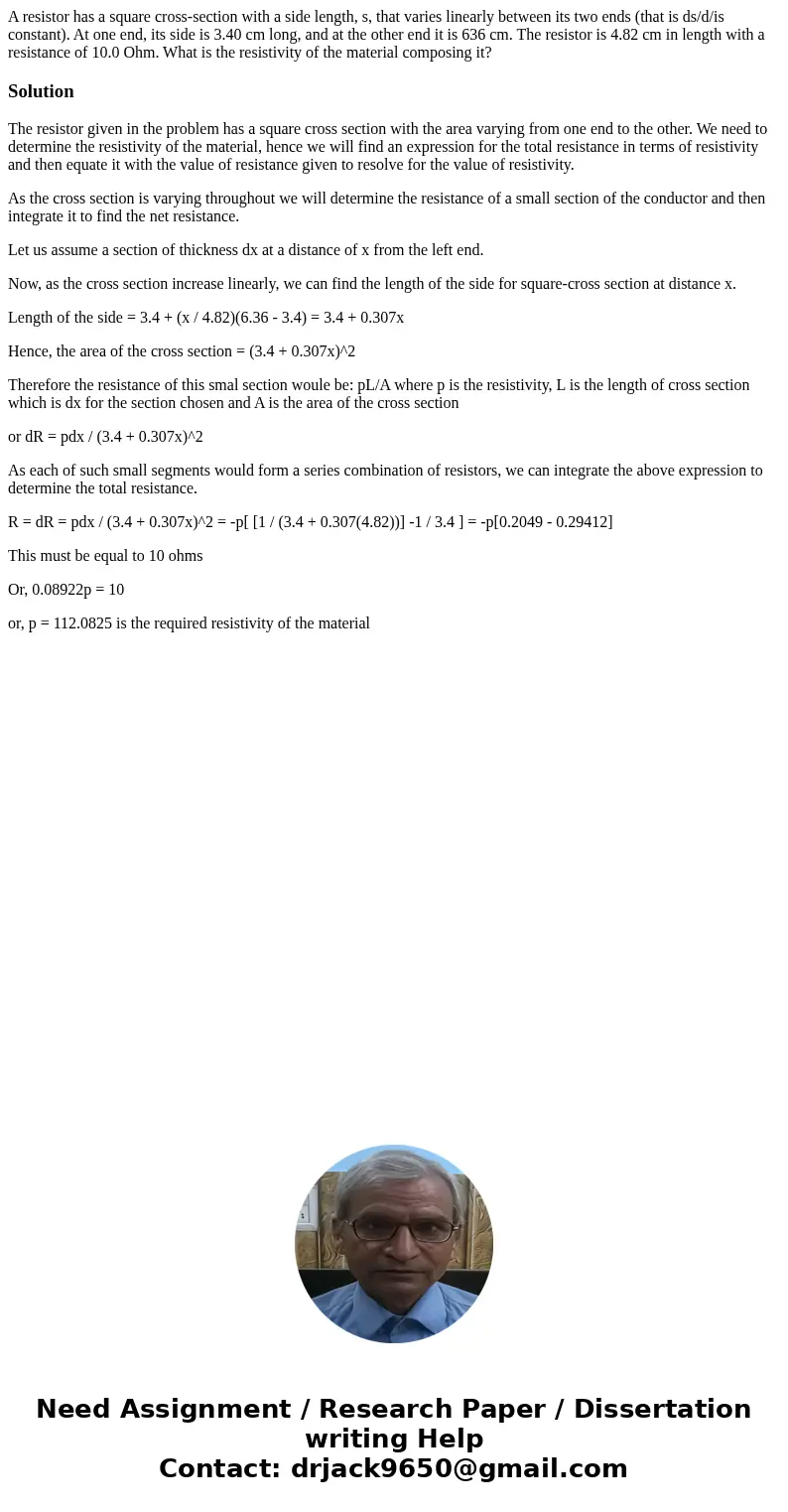A resistor has a square crosssection with a side length s th
Solution
The resistor given in the problem has a square cross section with the area varying from one end to the other. We need to determine the resistivity of the material, hence we will find an expression for the total resistance in terms of resistivity and then equate it with the value of resistance given to resolve for the value of resistivity.
As the cross section is varying throughout we will determine the resistance of a small section of the conductor and then integrate it to find the net resistance.
Let us assume a section of thickness dx at a distance of x from the left end.
Now, as the cross section increase linearly, we can find the length of the side for square-cross section at distance x.
Length of the side = 3.4 + (x / 4.82)(6.36 - 3.4) = 3.4 + 0.307x
Hence, the area of the cross section = (3.4 + 0.307x)^2
Therefore the resistance of this smal section woule be: pL/A where p is the resistivity, L is the length of cross section which is dx for the section chosen and A is the area of the cross section
or dR = pdx / (3.4 + 0.307x)^2
As each of such small segments would form a series combination of resistors, we can integrate the above expression to determine the total resistance.
R = dR = pdx / (3.4 + 0.307x)^2 = -p[ [1 / (3.4 + 0.307(4.82))] -1 / 3.4 ] = -p[0.2049 - 0.29412]
This must be equal to 10 ohms
Or, 0.08922p = 10
or, p = 112.0825 is the required resistivity of the material

 Homework Sourse
Homework Sourse